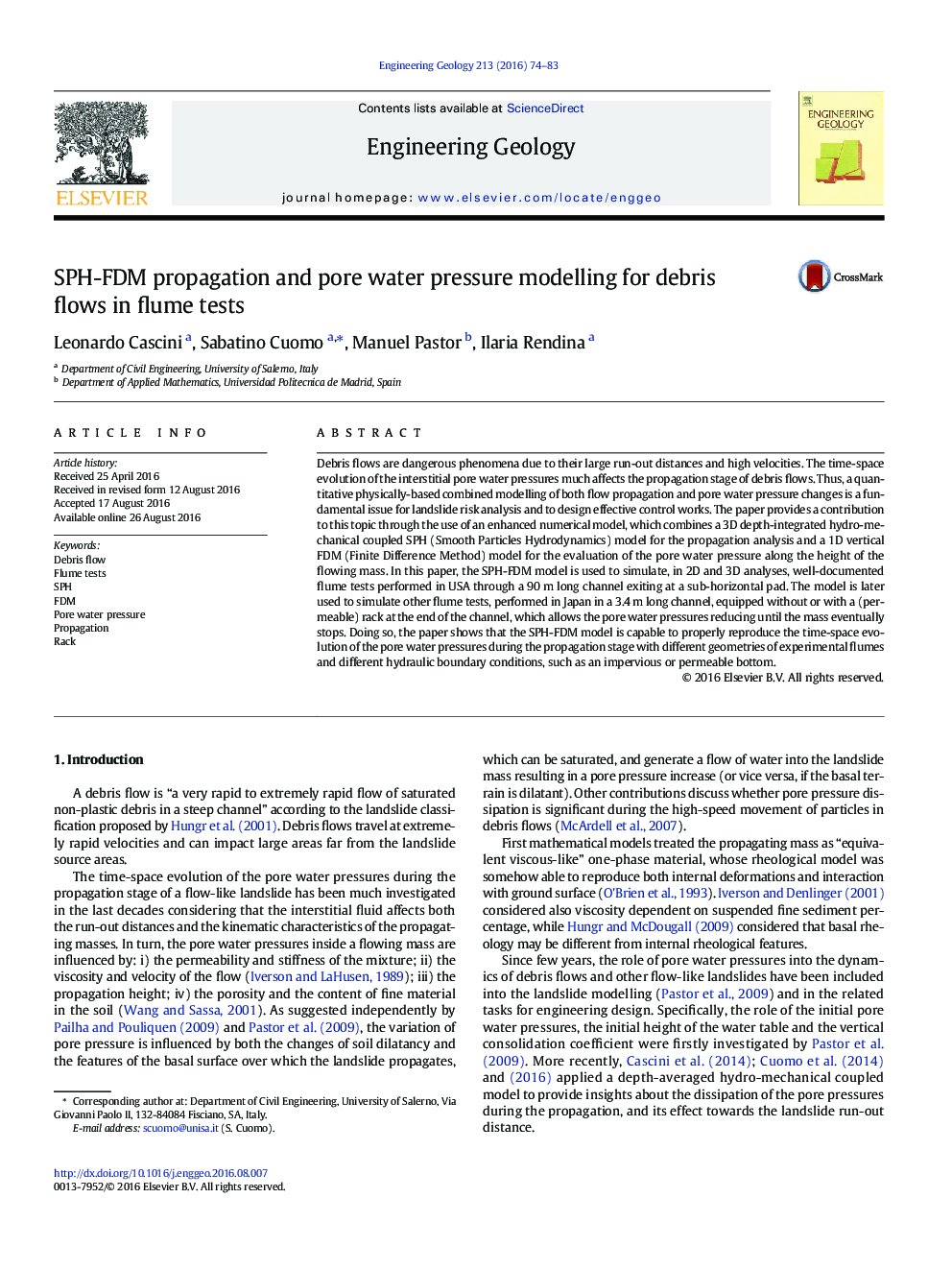| کد مقاله | کد نشریه | سال انتشار | مقاله انگلیسی | نسخه تمام متن |
|---|---|---|---|---|
| 4743074 | 1641772 | 2016 | 10 صفحه PDF | دانلود رایگان |

• Time-space evolution of the interstitial pore water pressures is simulated.
• Pore water pressures along the height of the flowing mass are computed.
• SPH-FDM model calibration done for flume tests.
• Control works based on the reduction of pore water pressures are analyzed.
Debris flows are dangerous phenomena due to their large run-out distances and high velocities. The time-space evolution of the interstitial pore water pressures much affects the propagation stage of debris flows. Thus, a quantitative physically-based combined modelling of both flow propagation and pore water pressure changes is a fundamental issue for landslide risk analysis and to design effective control works. The paper provides a contribution to this topic through the use of an enhanced numerical model, which combines a 3D depth-integrated hydro-mechanical coupled SPH (Smooth Particles Hydrodynamics) model for the propagation analysis and a 1D vertical FDM (Finite Difference Method) model for the evaluation of the pore water pressure along the height of the flowing mass. In this paper, the SPH-FDM model is used to simulate, in 2D and 3D analyses, well-documented flume tests performed in USA through a 90 m long channel exiting at a sub-horizontal pad. The model is later used to simulate other flume tests, performed in Japan in a 3.4 m long channel, equipped without or with a (permeable) rack at the end of the channel, which allows the pore water pressures reducing until the mass eventually stops. Doing so, the paper shows that the SPH-FDM model is capable to properly reproduce the time-space evolution of the pore water pressures during the propagation stage with different geometries of experimental flumes and different hydraulic boundary conditions, such as an impervious or permeable bottom.
Journal: Engineering Geology - Volume 213, 4 November 2016, Pages 74–83